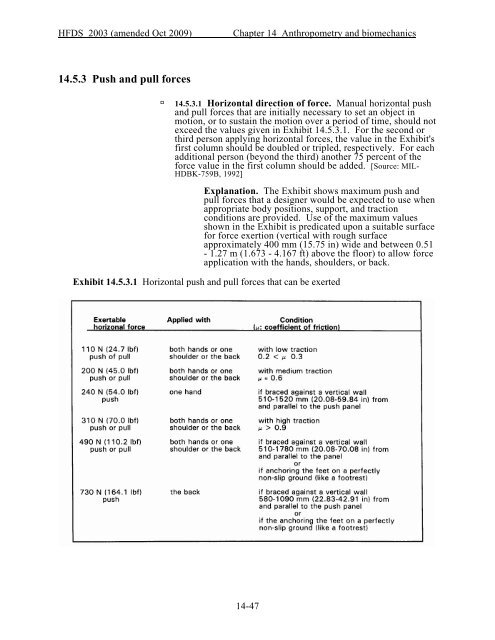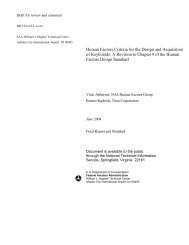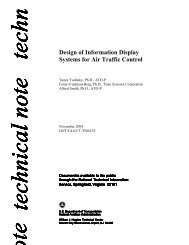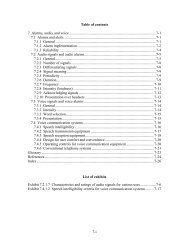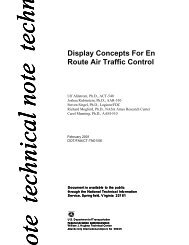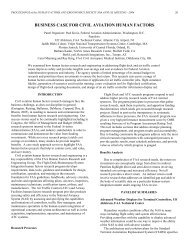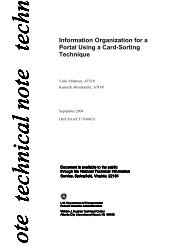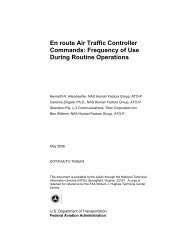Chapter 14. Anthropometry and Biomechanics - FAA
Chapter 14. Anthropometry and Biomechanics - FAA
Chapter 14. Anthropometry and Biomechanics - FAA
Create successful ePaper yourself
Turn your PDF publications into a flip-book with our unique Google optimized e-Paper software.
HFDS 2003 (amended Oct 2009)<strong>Chapter</strong> 14 <strong>Anthropometry</strong> <strong>and</strong> biomechanics<strong>14.</strong>5.3 Push <strong>and</strong> pull forces<strong>14.</strong>5.3.1 Horizontal direction of force. Manual horizontal push<strong>and</strong> pull forces that are initially necessary to set an object inmo tion , or to sustain the motion over a period of time, should notexceed the values given in Exhibit <strong>14.</strong>5.3.1. For the second orthird person applying horizontal forces, the value in the Exhibit'sfirst co lumn should be doubled or tripled, respectively. For eachadditional person (beyond the third) another 75 percent of theforce value in the first column should be added. [Source: MIL-HDBK-759B, 1992]Explanation. The Exhibit shows maximum push <strong>and</strong>pull forces that a designer would be expected to use whenappropriate body positions, support, <strong>and</strong> tractionconditions are provided. Use of the maximum valuesshown in the Exhibit is predicated upon a suitable surfacefor force exertion (vertical with rough surfaceapproximately 400 mm (15.75 in) wide <strong>and</strong> between 0.51- 1.27 m (1.673 - 4.167 ft) above the floor) to allow forceapplication with the h<strong>and</strong>s, shoulders, or back.Exhibit <strong>14.</strong>5.3.1 Horizontalpush <strong>and</strong> pull forces that can be exerted14-47


